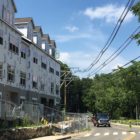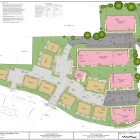Government
‘We Are Not Going for Bad Architecture’: Housing Authority Chairman on Proposed Redevelopment of Canaan Parish
|
As redevelopment plans for an affordable housing complex materialize, New Canaanites must balance safeguarding the town from a punitive state law with creating buildings that look just how they want and doing so in a financially viable way, project leaders said this week. Specifically, increasing the number of units at Lakeview Avenue and Route 123 in order to gain relief in the future from an affordable housing law known by its statute number ‘8-30g’ means working within restrictions in terms of building height and even style, according to the chairman of the New Canaan Housing Authority’s Board of Commissioners. Such considerations long have weighed on the minds of the Housing Authority and an organization called New Canaan Neighborhoods, which created and manages Canaan Parish, a 60-unit Section 8 housing complex, Chairman Scott Hobbs told members of the Town Council during their regular meeting Wednesday night. And though early-stage renderings of a redeveloped Canaan Parish have been received poorly by at least some in New Canaan, those schematics are not final and, in many ways, result from careful considerations in how to achieve a workable balance between financial viability and legal qualification on the one hand, and usefulness and aesthetics on another, Hobbs said. “If you want to build a giant box and put a low-sloped roof on it, you have more options,” Hobbs said at the meeting, held in Town Hall.



